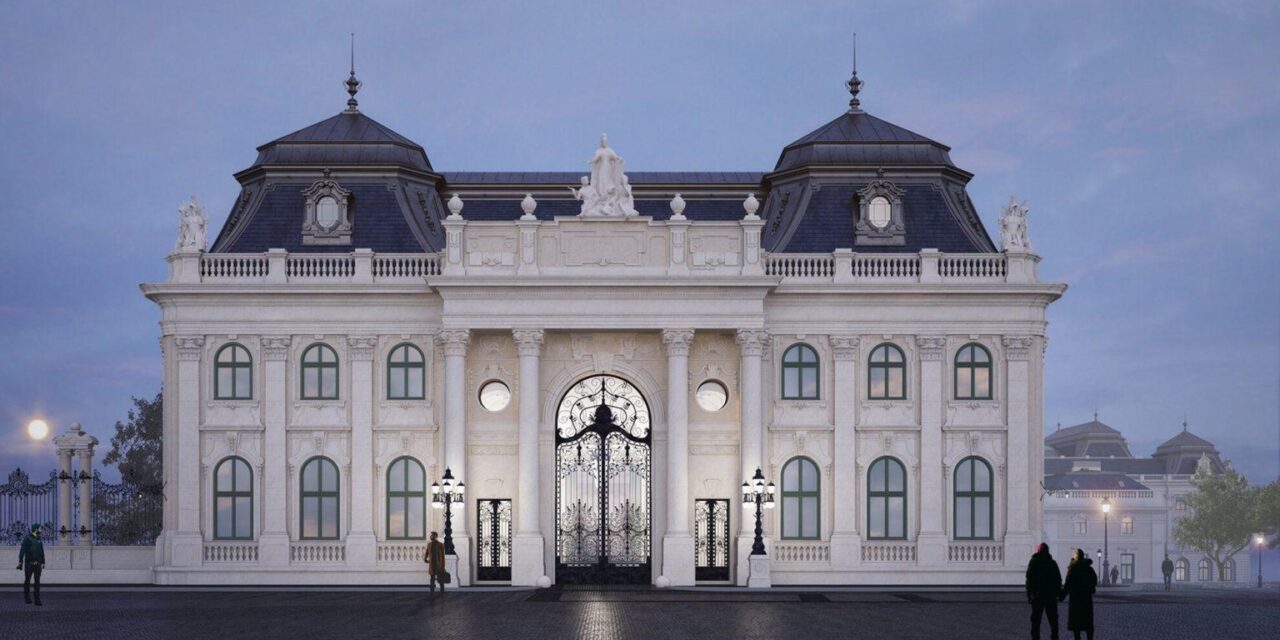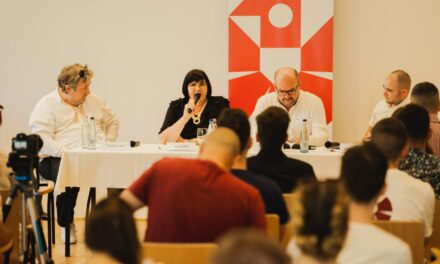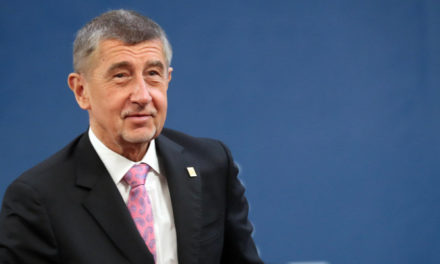Sculptor Gyula Jankovits' legendary group of sculptures entitled "Hungary" will be on display again in the north wing of the Budavári Palace.
During the expansion of the Royal Palace of Buda, the architect Alajos Hauszmann designed a main entrance richly decorated with Hungarian symbols for the facade of the new, northern wing on Szent György tér, modeled on the triumphal arches that were very popular in the Roman era. The sculpture group "Hungaria" by sculptor Gyula Jankovits was placed above Gyula Jungfer's stunningly beautiful Art Nouveau-style wrought iron gate.
"The work was about the glory of Hungarian industry and trade, which played a significant role in the construction of the palace"
- writes the National Hauszmann Program on its social page. It is known that the sculpture group was carved from four stone blocks from the Sóskút mine and placed in 1899 on the attic of the main entrance of the north wing.
"In the middle of the composition, Jankovits placed the allegorical female figure of Hungária in Hungarian lace dress with the Holy Crown on her head. In his right hand he held a laurel wreath symbolizing glory and victory, in his left he held the coat of arms of Hungary as a protective shield.
- explain the experts of the National Haussmann Program.
They add that the male figure representing Hungarian industry, holding a chisel and a hammer, was replaced on the Danube side. To the west of Hungary sat the allegorical female figure of commerce, holding the ancient symbol of commerce, the herald's staff.
As is known, II. the north wing and the gate were also damaged in World War II. Several elements of the Hungária sculpture group were broken off, but most of the composition survived the siege almost unscathed. Nevertheless, after the war, it was removed from Attica for ideological reasons, smashed and the statue group was lost.
"During the period of communism, the northern wing was stripped of its historicizing architectural elements and rebuilt in a "quieted" and schematized form. They significantly changed the mass of the building wing by widening it three window shafts wide to the west. The original main entrance on Szent György tér was also removed, and a new entrance was opened for the Labor Movement Museum on the northern, secluded side of Hunyadi Court"
- are listed.
As part of the historic renovation of the Budavári Palace, the northern wing building will be rebuilt according to the original plans of the renowned architect Alajos Hauszmann, above the northern gate of which the recreated Hungária sculpture group will once again be given its rightful place.
Featured image: National Hauszmann Program / Facebook













